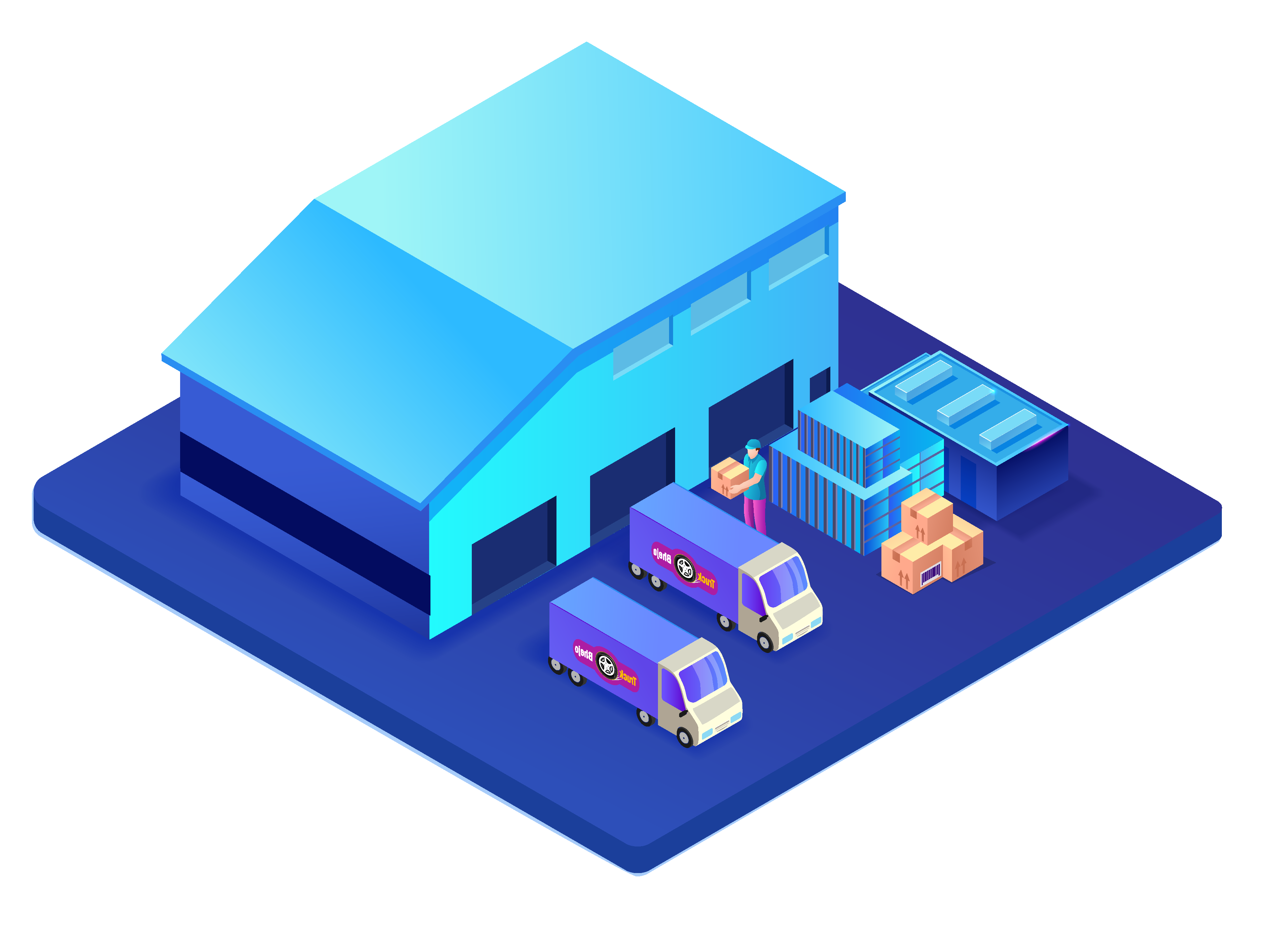Tech-logistics firm TruckBhejo’s next target is medium enterprise segment
In an exclusive interview, Nilesh Ghule, co-founder and CEO, TruckBhejo, talks to Indian Transport & Logistics News (itln.in) about the Indian logistics market, the rationale behind TruckBhejo, competition, solutions, technology, finance and future.

July 28, 2021: TruckBhejo is a technology-led logistics company focused on connecting both supply and demand sides to deploy an efficient logistics network. Catering to all three delivery miles - first, middle and last mile, it has the leading FMCG, manufacturing, telecom, and retail majors as its client. With a fleet of over 3,000 active trucks and 40 cities network, the company has shipped over 2 million tonnages and fulfilled over 1 million deliveries.
In an exclusive interview, Nilesh Ghule, co-founder and CEO, TruckBhejo, talks to Indian Transport & Logistics News (itln.in) about the Indian logistics market, the rationale behind TruckBhejo, competition, solutions, technology, funding and future.
Give me an overview of the Indian logistics market and the role of tech-based companies in it. How profitable is this market? Give me your historical perspective of its technological evolution?
From the size perspective, it’s almost a $160 billion market growing at the rate of 10.5 percent YoY. More transformations are expected with the government announcing new regulations and the new logistics policy which is going to come. People are anticipating that the market would be at around $200 billion in the next 5-6 years.
The second important thing is that as the market is so huge and the way it was structured has been unorganised. Today almost 60-65 percent of the business comes from the unorganised market. India being an agrarian country, most of the business happens around agri commodities and even the logistics business happens in that particular segment itself.
Technology requires these 2 things 1) the scale at which technology can be implemented and 2) the unorganised nature or the redundancies that are there in the network. In the last 15-20 years, people have moved to newer technologies but if you look at the last 5-6 years, the startup ecosystem started looking at logistics as an industry where growth and evolution can happen and the technology adoption has suddenly gone up. Vehicle tracking or coordination with drivers was a challenge almost 10-15 years back but right now it has become a parity service in the ecosystem where each and every vehicle can be tracked.
If you look at the industry margins, it varies across the service types. FTL player like TruckBhejo that operates into a full truckload market, the gross margin ranges between 11-13 percent. If you look at people operating into a PTL or express kind of market, the e-commerce market, the margins tend to move towards 17-18 percent.

We had a very simple vision as to what TruckBhejo will be - a technology-led logistics company that would have a focus on providing reliable, efficient and capacity agnostic trucking solutions to the customers.
Take me to the reason behind starting TruckBhejo and how satisfied you are right now? Give me an idea about your geographical presence and compare TruckBhejo with its competitors?
I come from a family of truck drivers. My father was a truck driver. When we say that we handle 3,000 vehicles every month on our platform, he is one of those individuals who would drive a truck on the Indian roads. Throughout my growing up days, I have seen the challenges a truckdriver face or from the supply side what are other constraints. If you look at the supply side, there are 15 million commercial vehicles running on the Indian roads.
Then I did my MBA from IIM Bangalore and joined one of the largest and fastest-growing organizations - Reliance Jio and that’s where I understood the problems that a customer faces. We thought that for a company like Reliance Jio, sending network equipment to 880 cities would be a cakewalk but suddenly we realised this is a bigger challenge for a large size company like Reliance Jio as well. For sending these products to 880 cities, they had to interact with at least 500-600 transporters.
The major 3 challenges that we saw were: - 1) Multivendor interface that means you have to interact with multiple vendors to get one requirement fulfilled 2) Geographical dependencies - People were limited to a certain geography, not to blame, because they had built that network using an asset model that they themselves had bought the vehicle 3) Technology - as people were not able to integrate this unorganised supply and provide a proper boutique of the services to the customer. That’s where we felt that the technology is missing and that would create an impact.
These were the 3 major levers that prompted us to begin our journey of starting Truckbhejo. We ourselves were creating the digital wave and you also know that with the launch of Reliance Jio, the complete digital system in the country has changed. The average consumption earlier was not more than 250MB per day but now people are consuming almost 2GB of data per day. This is how we started the company.
We had a very simple vision as to what TruckBhejo will be - a technology-led logistics company that would have a focus on providing reliable, efficient and capacity agnostic trucking solutions to the customers. This was the core statement with which we started the company in 2016 and it’s been almost 5 years in the operations. In terms of growth, we have a presence across 40 cities, 7 states and have almost 3000 active trucks running onto the platform. We cater to all the major industries like e-commerce, retail, FMCG, telecom as well as government contracts with the central as well as state governments.
We work with an FMCG major for the last 5 years, we started with three lanes and now we are catering to almost 45-50 lanes across Maharashtra with that particular FMCG major. That’s the kind of growth we have shown and that’s the kind of stickiness we have experienced with the particular customer.
Tell us about your competitors and how you are positioned against them in the market?
There are 2 benefits of competition – 1) As more people try solving the problem for a bigger industry like logistics, you get more solutions; 2) As more and more people start deploying the newer solutions, it is only going to help increase the pie of the total business which people are doing.
We are solving the problem of the customers which originates from the point of manufacturing the product and till the product is sold to the end consumer. The customer wants the carpet coverage of the logistics services across the supply chain and that’s where we play a crucial role. The technology solutions that we provide and the capacity agnostic trucking network that we have created helps them to get all the solutions in one place.
Everyone who is in the industry has a grey area in terms of the competition so there are people with whom we compete in the last mile like Porter. There is LetsTransport with whom we compete in the middle mile and first mile. The competition varies across the supply chain leg.

The next target segment for us is the medium enterprise segment who do business in the range of 100-500 crore and have a presence across 2-3 states or 10 states at the maximum.
List of solutions TruckBhejo offers and the priority.
TruckBhejo provides end-to-end trucking solutions to its partners across the supply chain. When we say across the supply chain, it starts from the first mile which is from farm to factory to the warehouse, the middle mile is from the regional warehouse to distribution point within the city and we also provide solutions to the last mile from the distribution point to the end consumers. The kind of solutions we provide across the plethora of the supply chain legs, the core priority comes in where the actuals sale for our customer is happening.
For example, for an FMCG major, when he is selling some part to you, that’s the actual sales where the actual business is happening for our FMCG customer and that actually starts from a middle mile and the last mile segment so these are the 2 segments which we are predominantly focussing on at the current stage and the second growth lever or the major focus area for TruckBhejo is the medium enterprise segment because right now most of the start-up ecosystem or for that matter traditional players are focussing on the bigger blue-chip companies but there is this bigger ecosystem which is getting developed almost 65 million SME players or medium enterprises are there and the number is eventually going to go up with the newer policies which the government is implementing.
The next target segment for us is the medium enterprise segment who do business in the range of 100-500 crore and have a presence across 2-3 states or 10 states at the maximum. These are the customers TruckBhejo is targeting and is the priority area for us in near future.
More about dealing with Truck drivers and the importance you give them?
Look at from the supply side - the trucking community has around 15 million commercial vehicles, out of that almost 2.5 - 3 million vehicles have been run by people who are micro-entrepreneurs, people who own and drive the vehicles. Even from that perspective, the total size of micro-entrepreneurs is high. As a company strategy, we target and bring in change or revolution in the lives of these micro-entrepreneurs rather than working with fleet owners.
The fleet size constitutes up to 85 percnet of micro-entrepreneurs which means 85 percent of the people driving vehicles on our platform are owner-drivers. This is a different strategy that we have adopted. It has provided 2 benefits - reliability in the service and cost-benefit. As an owner-driver, one would not run away or steal the goods as their livelihood is dependent on the vehicle. As you try removing the middlemen and you try providing the direct benefits to the customer/driver, the cost benefits eventually start trickling down to you and the total price which you pay for the particular trip goes down.
How is technology penetration amongst the owner-drivers?
Initially, when we started off in 2015-2016, the penetration in terms of the app adoption or use of the phone itself was not much. After the advent of 4G-5G wherein the data has become cheap, even the truck drivers have started jumping off to the bandwagon effect which all the telecom players have created. Most people have started using apps and smartphones. From a technology adoption point of view, we have seen a slow and steady rise not as high as the food ordering app but the drivers have started using the technology.
We are addressing the technology adoption problem related to the app by creating of Whatsapp chat bolt which interacts with the customer as well as the driver. Once the order comes in the driver is updated on Whatsapp as well as the app. Technology has enabled in getting the transparency on the load as well as managing and tracking the expenses of the trip.

TruckBhejo is looking to raise growth capital to expand the market and tap the medium enterprise segment and customers largely operating in the last mile services.
How was the last financial year and are you looking for funding?
In terms of the sheer growth numbers, we have grown in terms of the topline almost 20 percent as compared to the last year and that’s a commendable number considering the kind of challenges people have faced with many businesses shutting down. We have registered an average of 10-12 percent of the gross margin and that’s the overall financial performance.
From a financial perspective, the company is stable in managing the business from a working capital perspective. However, TruckBhejo is looking to raise growth capital to expand the market and tap the medium enterprise segment and customers largely operating in the last mile services.
What can we expect in the near future?
|We are happy about the process and the revolution we have brought to the lives of the owner drivers as well as the reliability and the transparency provided to the customers. We feel not so satisfied with is the reach, the kind of solutions which we provided and the kind of changes which we have brought have not reached the masses at scale and we are now addressing this in the coming year.
With stable technology, stable business operations and the kind of network which we have built, the next few years will be about growth, geographical presence whether near geographies, existing geographies or deep penetration in the existing customer supply chain or onboarding newer customers.
We are aggressively working towards these strategies, newer business segments like medium enterprises, addressing opportunities of last-mile where we would be closer to the customer as provide a similar experience as we provide to bigger B2B players.
The last 5 years were formative years and the next 5 years would be growth years.

Libin Chacko Kurian
Assistant Editor at STAT Publishing Group, he has eight years of experience in business journalism covering food & beverage, nutraceuticals and now logistics. His current passion is to understand the nuances of global supply chains and their current turmoil. Outside work, he is also interested in philosophy, history, birding and travelling. Mail him: libin@statpublishinggroup.com Follow on LinkedIn


